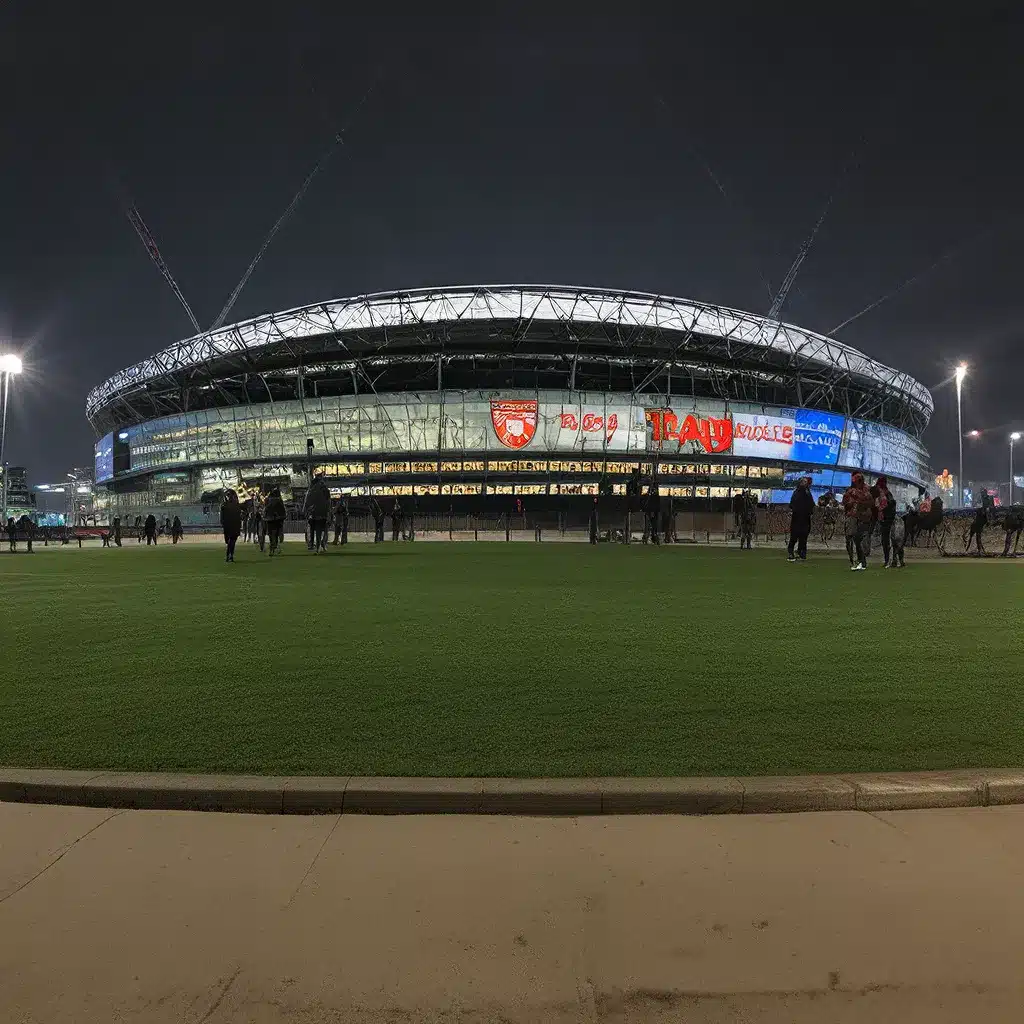
Nestled in the heart of North London, Wembley Stadium stands as a beacon of sports and entertainment, captivating audiences from around the world. This iconic venue, with its striking arch soaring high above the city skyline, has played host to some of the most electrifying events in history, from the roar of the crowd during international football matches to the thunderous applause that greets the world’s biggest musical stars.
The Storied Past of Wembley Stadium
The story of Wembley Stadium begins in the early 20th century, when the original Wembley Stadium was constructed for the 1924 British Empire Exhibition. This grand structure, with its distinctive twin towers, became a symbol of national pride and a hub for some of the most significant sporting events in the country. Over the years, the stadium hosted the FA Cup Final, the England national football team’s home matches, and even the 1948 Summer Olympics.
However, as time passed, the aging stadium began to show its wear and tear, and it became evident that a new, modern facility was needed to meet the growing demands of the sporting and entertainment industries. In 2000, the decision was made to demolish the original Wembley Stadium and construct a brand-new, state-of-the-art arena in its place.
The Birth of a New Wembley Stadium
The construction of the new Wembley Stadium was a massive undertaking, costing an estimated £757 million and taking nearly seven years to complete. The design, with its iconic arch reaching a height of 133 meters, was a bold statement that sought to capture the grandeur and prestige of the original stadium while incorporating cutting-edge technology and modern amenities.
One of the most striking features of the new Wembley Stadium is its retractable roof, which allows the venue to be used year-round, regardless of the weather. This innovation has made the stadium a popular choice for a wide range of events, from international football matches to major music concerts.
The nearby London Marriott Hotel Maida Vale, with its convenient location and luxurious accommodations, has become a popular choice for visitors seeking to experience the magic of Wembley Stadium.
Hosting the World’s Biggest Events
Since its grand opening in 2007, Wembley Stadium has cemented its reputation as one of the premier sporting and entertainment venues in the world. The stadium has played host to some of the most significant events in recent memory, including the 2011 and 2013 UEFA Champions League Finals, the 2012 Summer Olympics, and countless concerts by the biggest names in music.
One particularly noteworthy event was the series of concerts by Taylor Swift in 2018, which were so energetic that they even registered on local seismometers. The ground-shaking performances of hits like “Love Story” and “Shake It Off” demonstrated the incredible power and passion of Swift’s devoted fanbase, known as “Swifties.”
The Enduring Legacy of Wembley Stadium
As Wembley Stadium continues to captivate audiences from around the world, it has also become a hub for community engagement and local pride. The stadium’s outreach programs and initiatives have helped to inspire young people, fostering a love for sports and the arts that can last a lifetime.
Visitors to the Wembley Stadium can immerse themselves in the rich history and vibrant atmosphere of this iconic venue, exploring its many facets and discovering the stories that have unfolded within its walls. Whether you’re a die-hard football fan, a music aficionado, or simply someone who appreciates the power of live events, Wembley Stadium is sure to leave a lasting impression.
As the world’s attention continues to converge on this remarkable stadium, it is clear that Wembley’s legacy will endure, inspiring generations to come with its unparalleled blend of sport, entertainment, and community spirit.

